Buddhist City Tour
During the city tour, we provide the historical background of the various sites and also introduce Buddhist philosophical ideas for those who are interested.
The price is 100 USD per day for a group of up to 5 people. Send us an email or WhatsApp for more information.
+977 9820235569
Below is a list and information about some of the sites to be covered:
Swayambhu Stupa
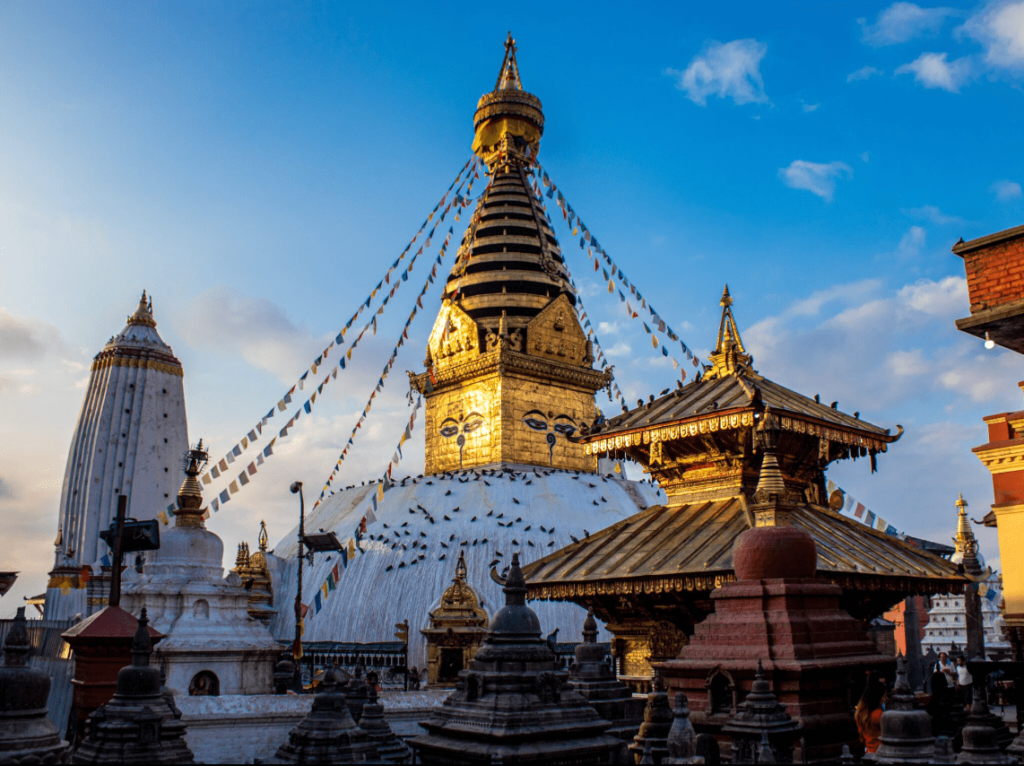
Considered by some as the most powerful shrine in all the Himalayas, Swayambhu’s story is connected with the origin of Buddhism in Nepal and the origin myth of the Kathmandu Valley as a whole. The Stupa, along with other shrines, rests atop a forested hill on the western edge of the valley. According to Newar tradition (the Newari people are the local inhabitants of the Kathmandu Valley), this is the center of the Nepal Mandala.
Boudha Stupa
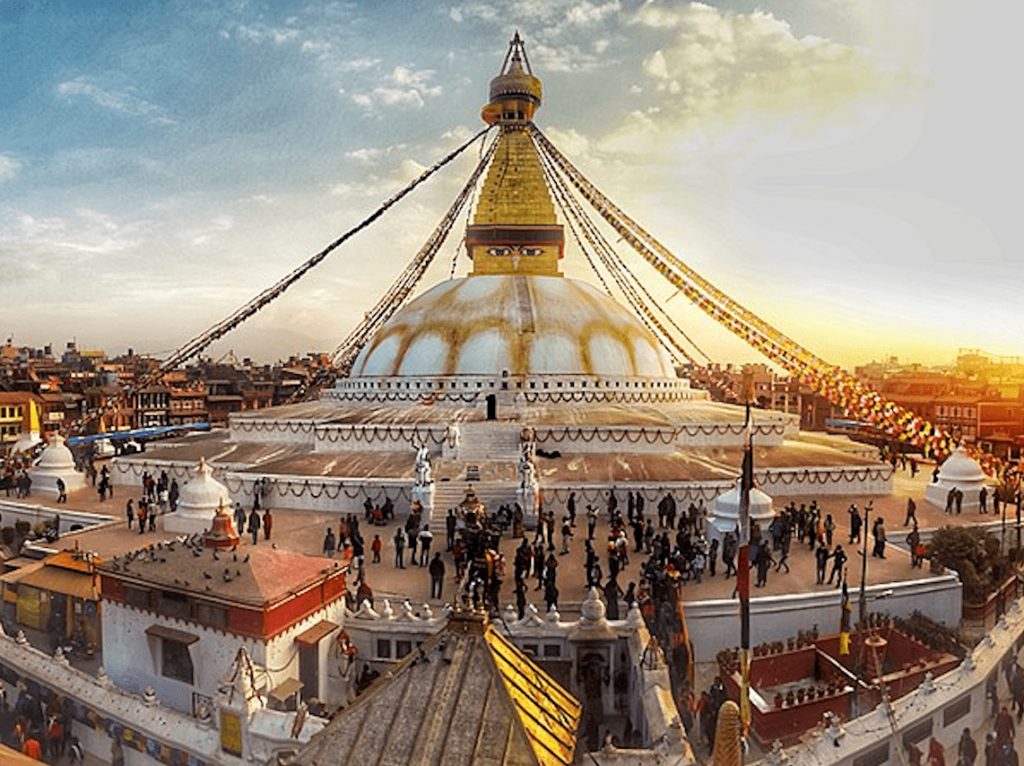
One of the largest stupas in the world, Boudha stupa is located on the ancient trade route that crosses the Himalayas from Nepal to Tibet on the eastern side of Kathmandu. Ever since the arrival of Tibetan refugees during the second half of the 20th century, it has become their main center of worship in Nepal and now is one of the main centers of Tantric Buddhist activity in the world. The stupa and its surrounding areas are home to over 50 different Buddhist monasteries as well as to an active community of craftsmen, artists, and dharma practitioners.
Namo Buddha Stupa
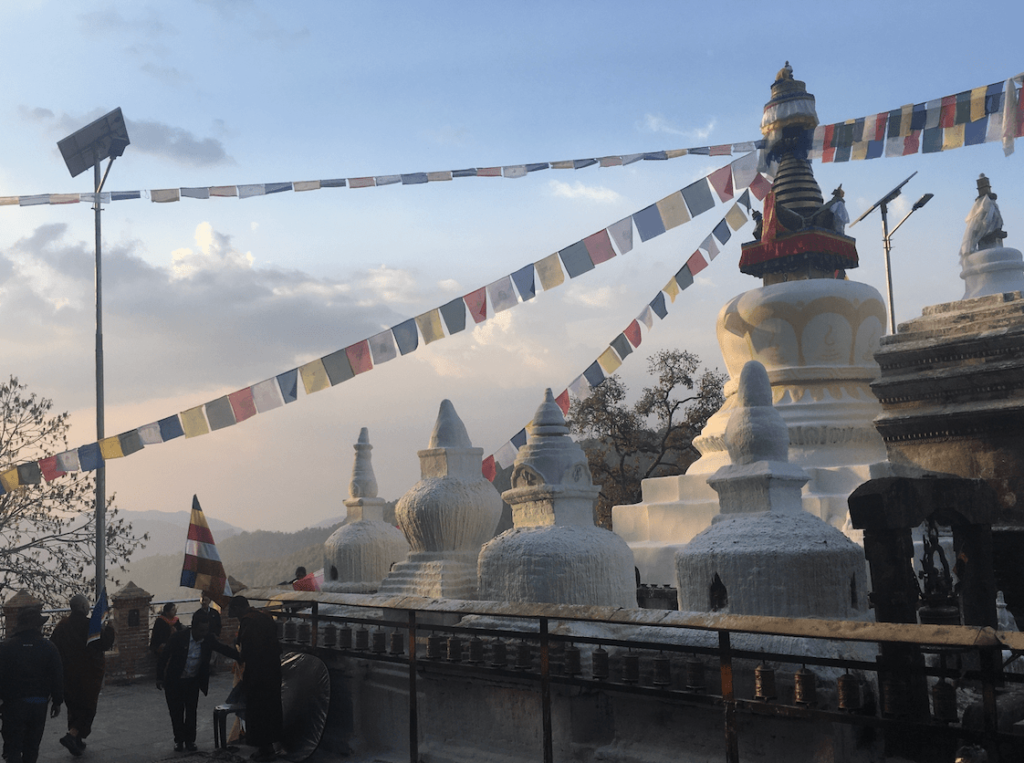
This stupa marks the site where in a past life, Buddha Shakyamuni offered his body to a starving tigress who was about to eat her own cubs. Due to this deed, this is regarded as the birthplace of the practice of body offering which developed in Tibetan Buddhism as Chod. Due to the karmic repining of this deed, those five cubs are believed to have been reborn as Buddha’s first five disciples to whom he imparted his very first teaching on the Four Truths, and the mother tigress was reborn as the woman who offered him the curd which invited him to break his asceticism and attain final enlightenment. Namo Buddha is located southeast of the Kathmandu Valley. Thangu Rinpoche’s monastery is located up the hill. There one can find lodging and summer courses on Buddhist philosophy and Tibetan language.
Tilopa and Naropa Caves
Tilopa and Naropa Caves
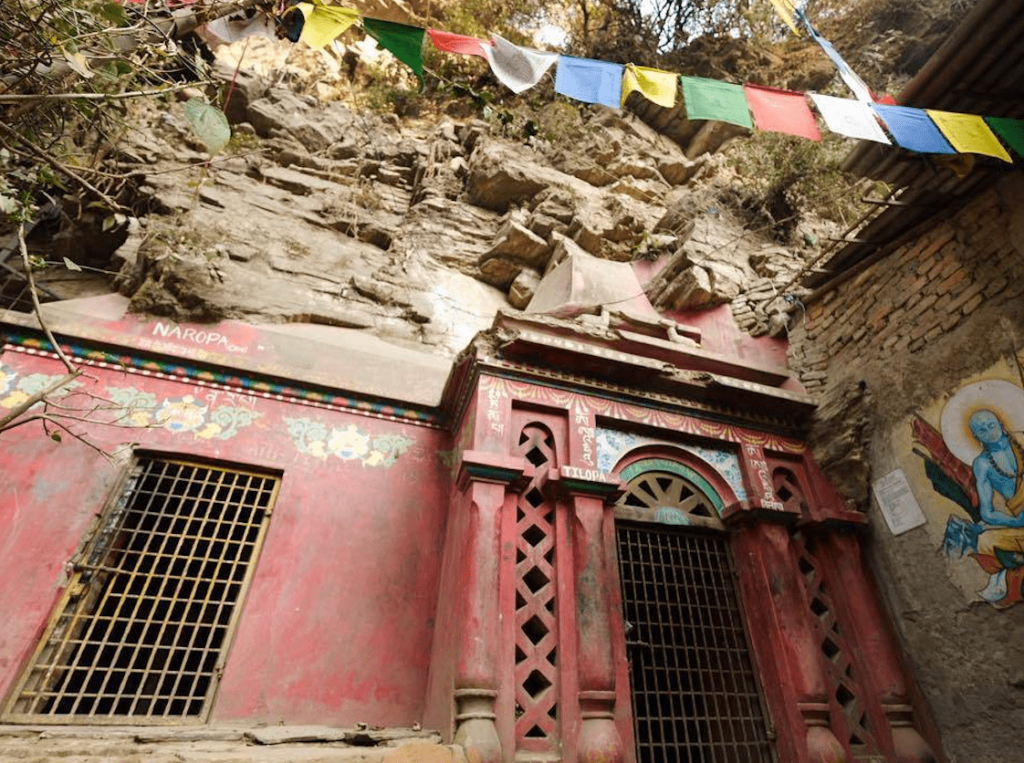
Located on the banks of the Bagmati River within the Pashupatinath temple compound, there are two caves which the Tibetan tradition identifies as being places where the two progenitors of the Kagyu lineage meditated. The caves are located in a relatively quiet location within the Pashupati Gorge. There are many other caves in the surroundings. Some are empty and some are inhabited by Hindu yogis mainly from the Goraknath lineage. Even though nowadays Pashupati is usually associated solely with Hinduism, there are other Buddhist sites such as Guhyeshwori temple which is associated with Vajrayogini. In addition, Vishworup Temple’s main deity is identified as Chemchok Heruka according to Tibetan guidebooks. Chemchok Heruka is one of the deities of the Mandala of the Great Eight which Guru Padmasambhava introduced to Tibet and has remained an important practice within the Nyingma Tradition. This temple may be the site known as “Orgyen’s Throne” in some Newar chronicles. Khamtrul Chokyi Nyima mentions a tree and an image of Goraknath near the site where Guru Rinpoche meditated so it is likely this is the same location.
Tham Bahil
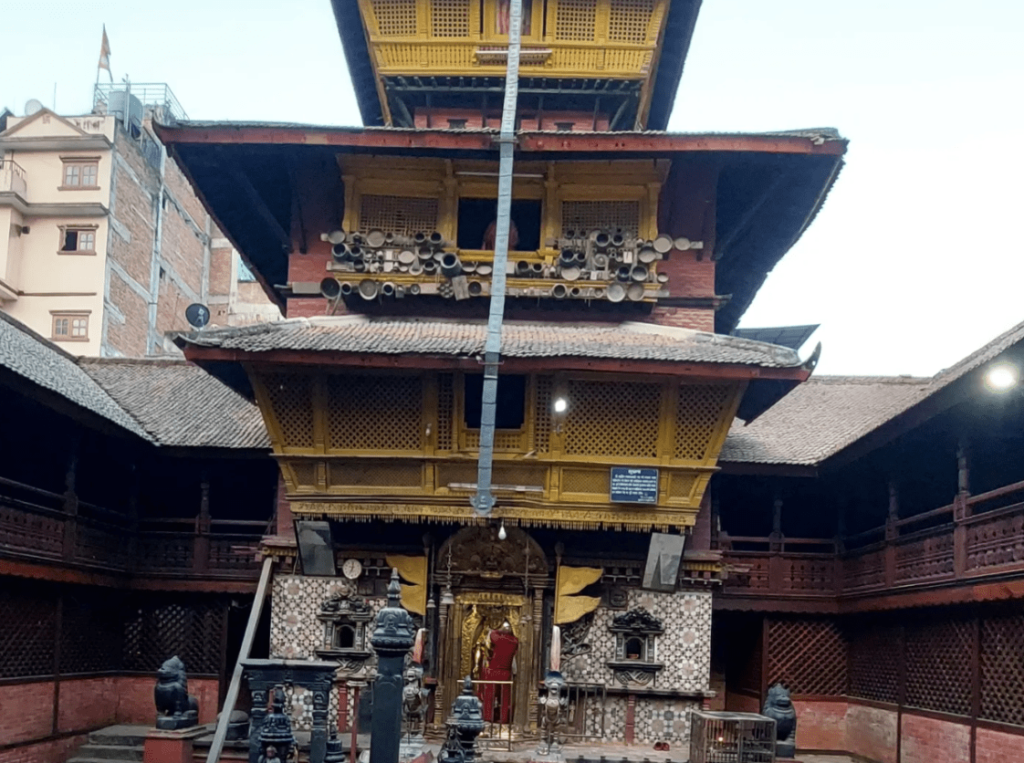
Nestled within Thamel (where it gets its name from), the tourist district of Kathmandu, Tham Bahil is an ancient monastery said to have been founded by the great master Atisha Dipankara during his stay in Nepal in the 11th century CE when he was on his way to Tibet from India. Here a sacred ancient manuscript of the Prajnaparamita Sutra in One Hundred Thousand Verses is stored and displayed upon request. This particular copy is said to have been pulled out by Nagarjuna from Shantipur (a secret temple in the vicinity of Swayambhu stupa) where there is an entrance to the realm of the nagas. Even though the dates don’t exactly match for this to be the Nagarjuna who developed the unsurpassed Madhyamaka philosophy, the mountain behind Swayambhu hill is also called Nagajun Hill and is said to have other sites associated with him.
Talking Tara

Situated in the heart of old Kathmandu, the primary object of worship within a small courtyard next to Itum Bahal, is an image of White Tara. She is flanked by two attendants. Also recognized as Taking Tara, this statue was erected in the 14th century by a devoted woman from Banepa. According to Tibetan tradition, she is believed to have flown from Tibet and imparted teachings, earning her the affectionate nickname “Talking Tara.” This is a must-visit site for all those who have a connection with her.
Chilancho Stupa
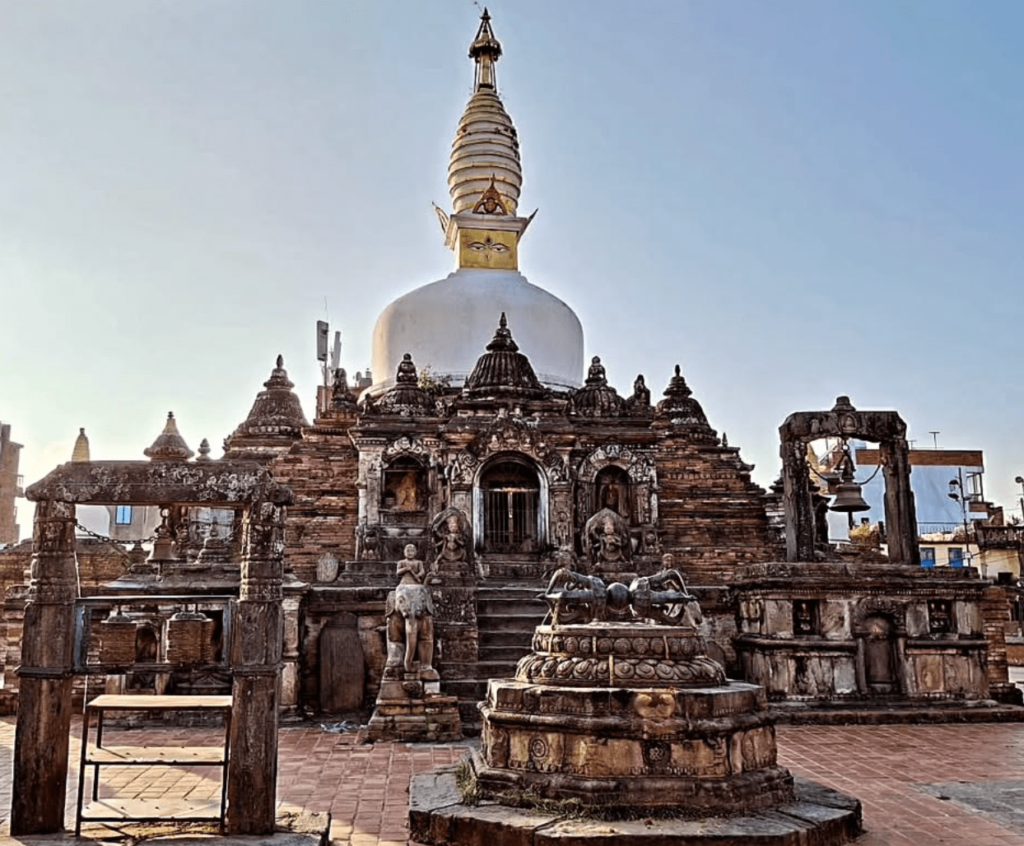
The Chilancho stupa mandala may be Kirtipur’s oldest monument, but its exact age is impossible to ascertain without detailed archeological explorations. Popularly it is believed to be one of several stupas founded by the emperor Ashoka in the 3rd century BCE, though there is no direct evidence. The earliest datable evidence is a record from 1533 detailing renovations performed at the behest of a certain Jagat Pal Varma of Patan (Lalitpur), though considerable additions and alterations continued in the subsequent centuries, with a number of them in the 1668-73 period. Click HERE for a short video.
Golden Temple
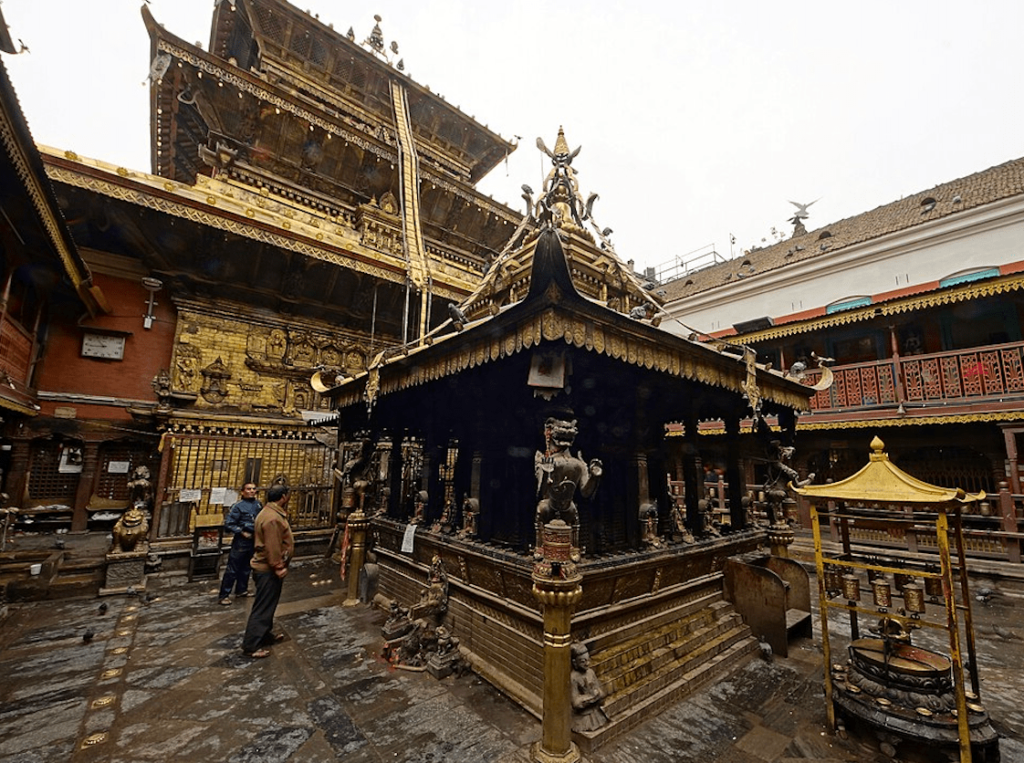
Located near Patan Durbar Square, this is probably the most significant Newar Buddhist monastery in the Kathmandu Valley. The Golden Temple is renowned for its contemporary religious vitality, wealth, and the quality of its art. One can’t help but imagine how many Buddhist monasteries in the valley must have looked like this some hundreds of years ago during the period when the previous dynasties of kings of the Kathmandu Valley still supported Buddhism. However, unlike museums that usually feel stale, Golden Temple is beaming with activity by its local Newar community. Its main and adjacent shrines are generally active with people performing the daily rituals that have been igniting its spiritual energy for nearly one thousand years. The main object of worship is a silver image of Shakyamuni Buddha held in the main shrine. In subsidiary shrines, there are exquisite sculptures of Tara, Manjushri, Vajrasattva, Avalokiteshvara, Vasundhara, and in the center of everything a Swayambhu Stupa. The stupa itself is regarded as the oldest object around which the vihar was established in the 11th century CE.
Mahabodhi Temple
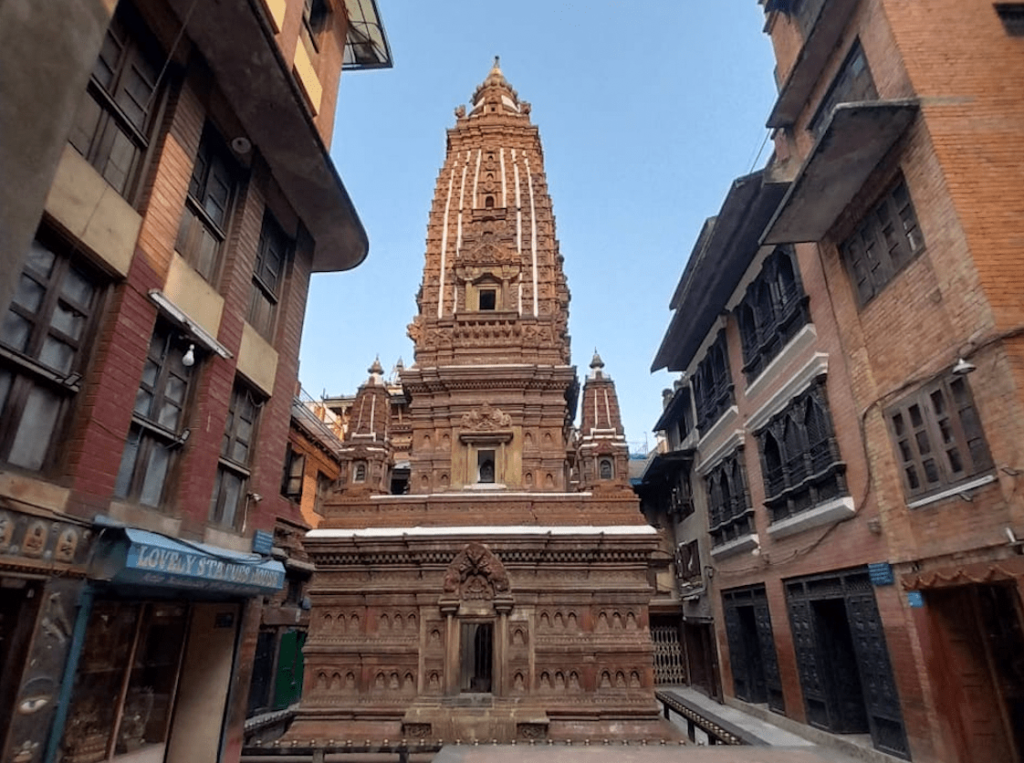
This temple complex is dominated by a replica of the Mahabodhi Stupa in Bodhgaya, India, the site where the historical Buddha attained final enlightenment. The temple is the product of a vision from a devoted Newar priest who, after returning to his native Lalitpur from a pilgrimage to Bodhgaya in the 1500s, recreated the main shrine there with the support from his lucrative coin making venture. It is nicknamed the Thousand-Buddha Temple, due to its prolific representations of Buddha in most of its molded terracotta bricks. Following the door upstairs in front of the main shrine statue of Buddha Shakyamuni, there is a tantric temple dedicated to Vajrayogini. This is one of the Four Yoginis of the Kathmandu Valley. There is also a smaller stupa similar to the main one dedicated to Queen Mayadevi, Shakyamuni Buddha’s mother.
Sankhu Vajrayogini
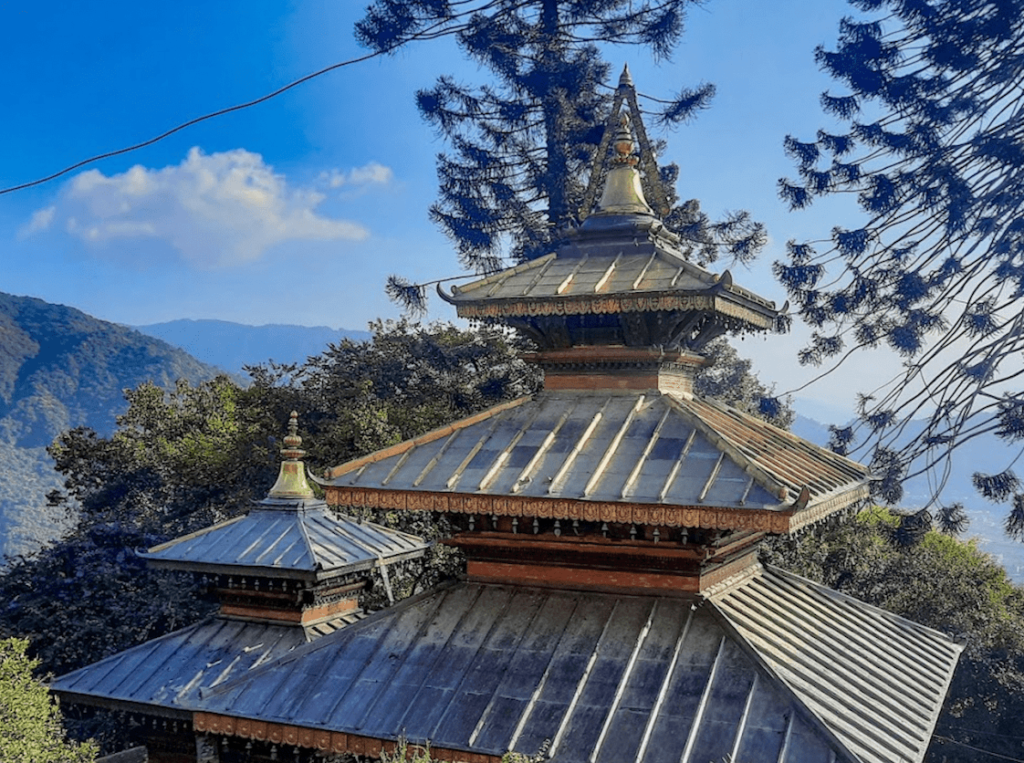
Located in the ancient Newar village of Sankhu around 20 km east of the center of Kathmandu, on the old road to Hyolmo and Tibet, Vajrayogini resides in her free-standing mandir built in the traditional Newar style pagoda architecture within a temple complex in the middle of a forest. The oldest inscriptions date this site back to the 6th century, making it one of the oldest recorded power places of the valley. Numerous Buddhist masters are believed to have practices here. According to the terma tradition, Guru Rinpoche came to Sankhu in the 8th Century and met his Nepali consort Shakyadevi. From here they went together to Yangleshö (Pharping) to practice the Yangdak and Vajrakilaya tantras.
Pharping (Yangleshö)
The Village of Pharping is located on the southern rim of the Kathmandu Valley. Known by the Tibetans as Yangleshö, this area holds several power places associated with many great Buddhist masters, especially Guru Padmasambhava. This is the place where Guru Rinpoche is believed to have attained the realization of Mahamudra, making it equivalent to Bodhgaya for tantric Buddhists.
Yangleshö Cave
Upon reaching the town from Kathmandu City one arrives at a copious spring identified as Chumikjangchub or “The Spring of Enlightenment” by Chatral Rinpoche. Above this spring, next to a Hindu temple dedicated to Narayan, is Yangleshö cave, where Guru Rinpoche himself meditated. Within it, one can find the Guru’s headprint on the roof. The rock formations above this cave are also believed to be poisonous naga snakes turned into stone by Guru Rinpoche’s power when they were trying to attack him.
Pharping Vajrayogini

Around the hill is the Pharping Vajrayogini Temple. She is one of the four main Yoginis of the Valley. Her form is based on a vision of Mahasiddha Phamthingpa who had the original image made in the 11th century. Phamthingpa was one of the most renowned teachers of his day. He studied under Mahasiddha Naropa for nine years in India. It is also believed that Marpa Lotsawa also stayed in this temple three times during his journeys back and forth from Tibet to India.
Asura Cave
Overlooking the town is Asura Cave. Nowadays surrounded by a branch of Chokyi Nyima Rinpoche’s White Monastery and their retreat center, one can also stay and retreat for a few days in the vicinity of this holy site. Within the cave, there are sculptures of Yangdak Heruka and Vajrakilaya, which according to tradition are the practices the Great Guru engaged in while staying at this locale. There is a handprint on the rock right outside the cave, imprinted by one of the many yogis who have meditated there during the centuries following the site being blessed by Guru Rinpoche.
Self-Arisen Tara
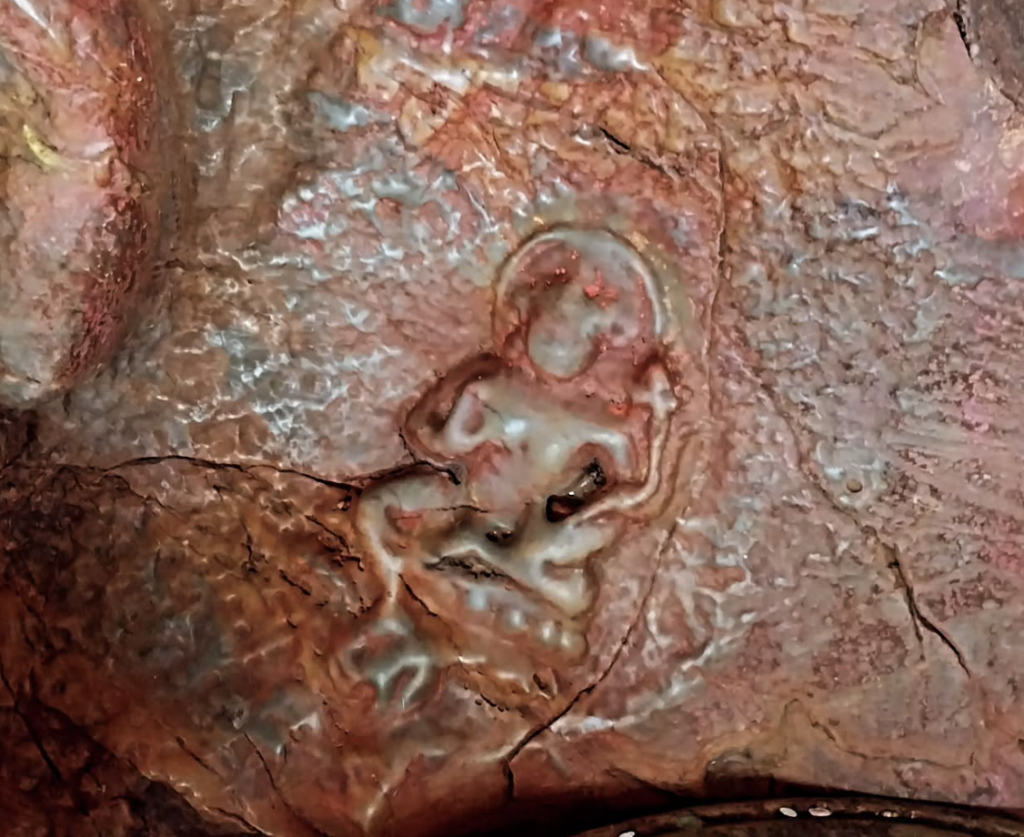
Below Asura Cave, one can also find Rangjung Drolma or The Self-Arisen Tara. Self-arisen Tara of Pharping. It was first noticed in the 1970’s and then a shrine was built around it. I have heard from some people who visited there in the 1980’s that the second Tara that seems to be also emerging now was not visible back then. A temple now protects Tara within the monastic compound built by Ralo Rinpoche.
